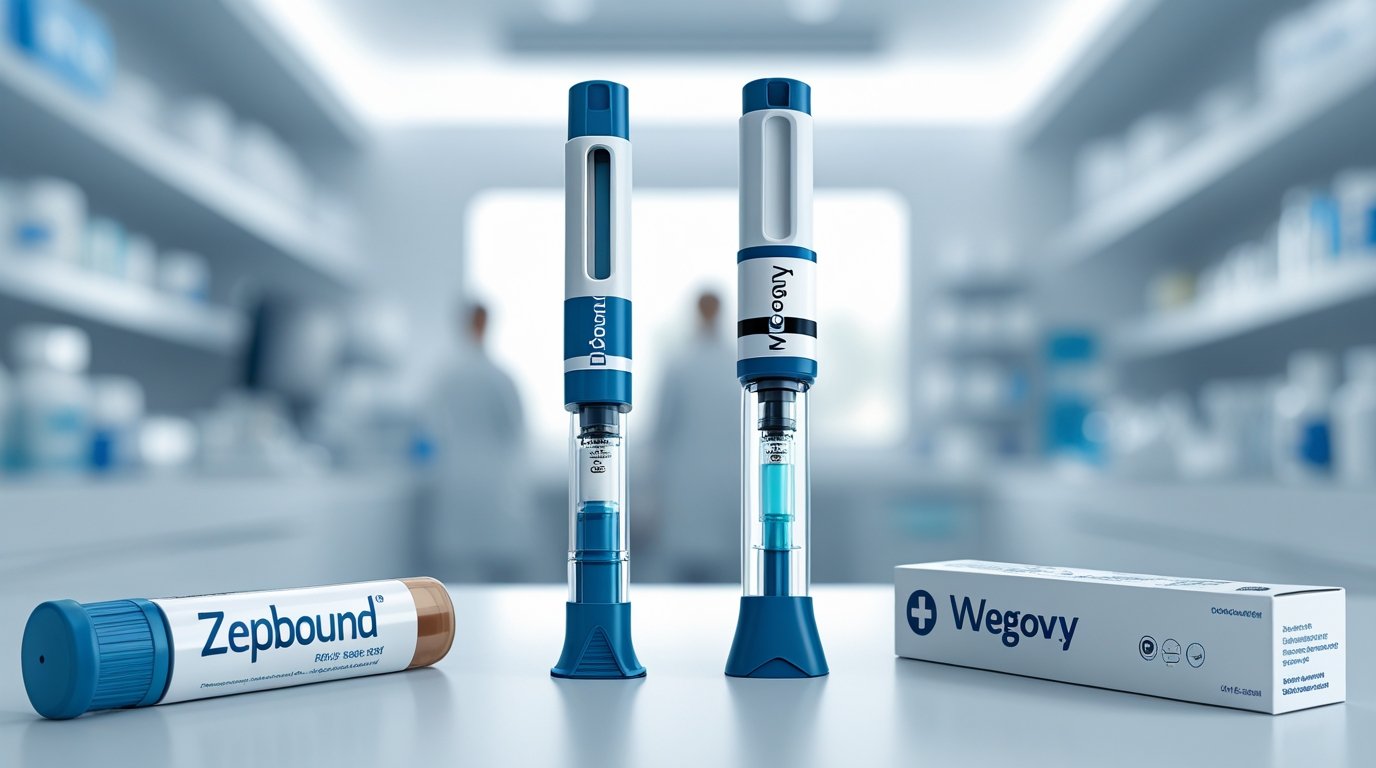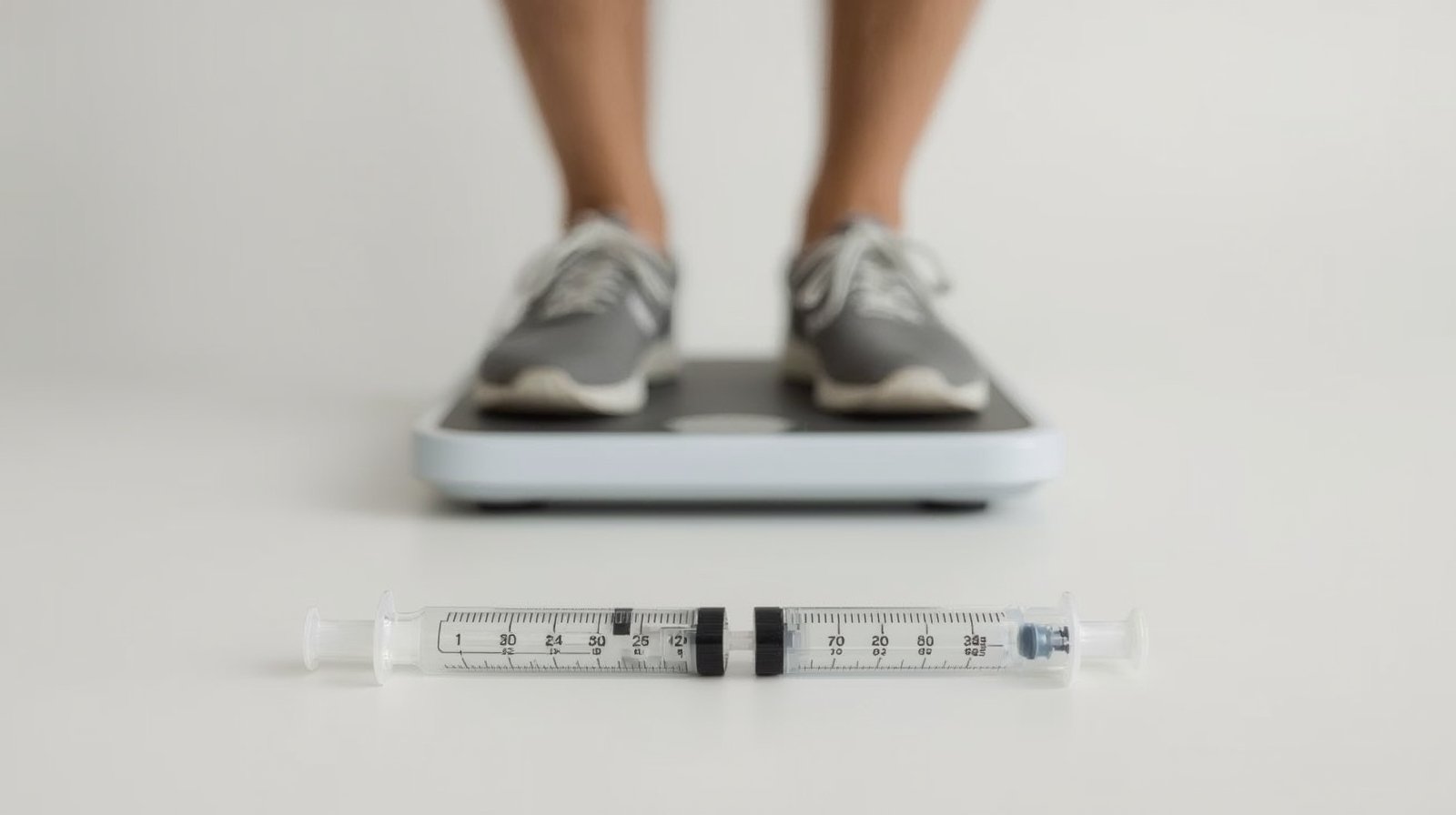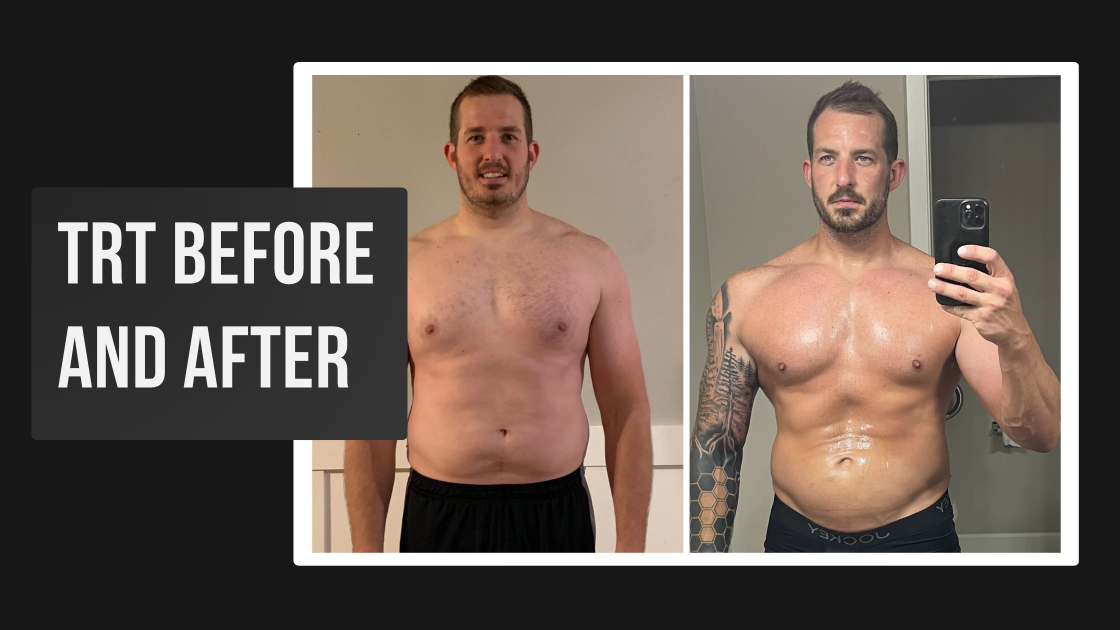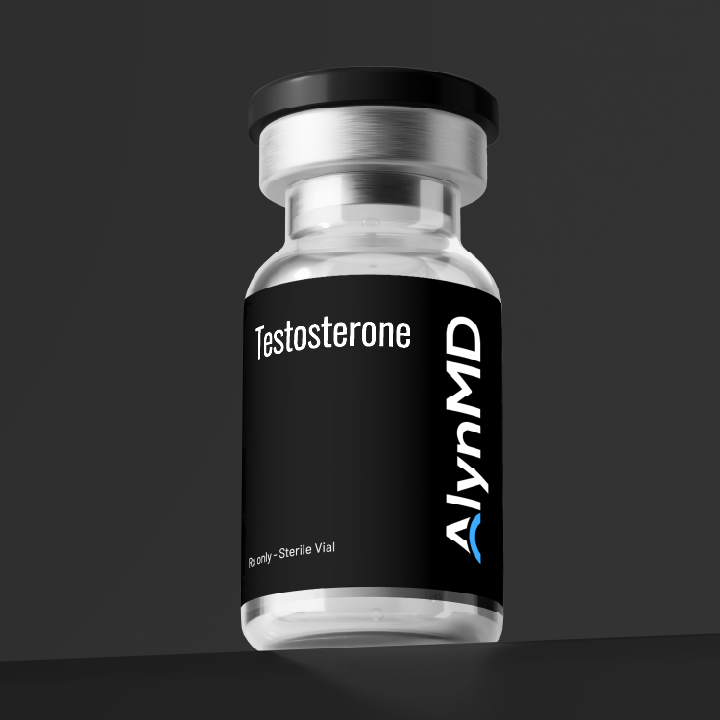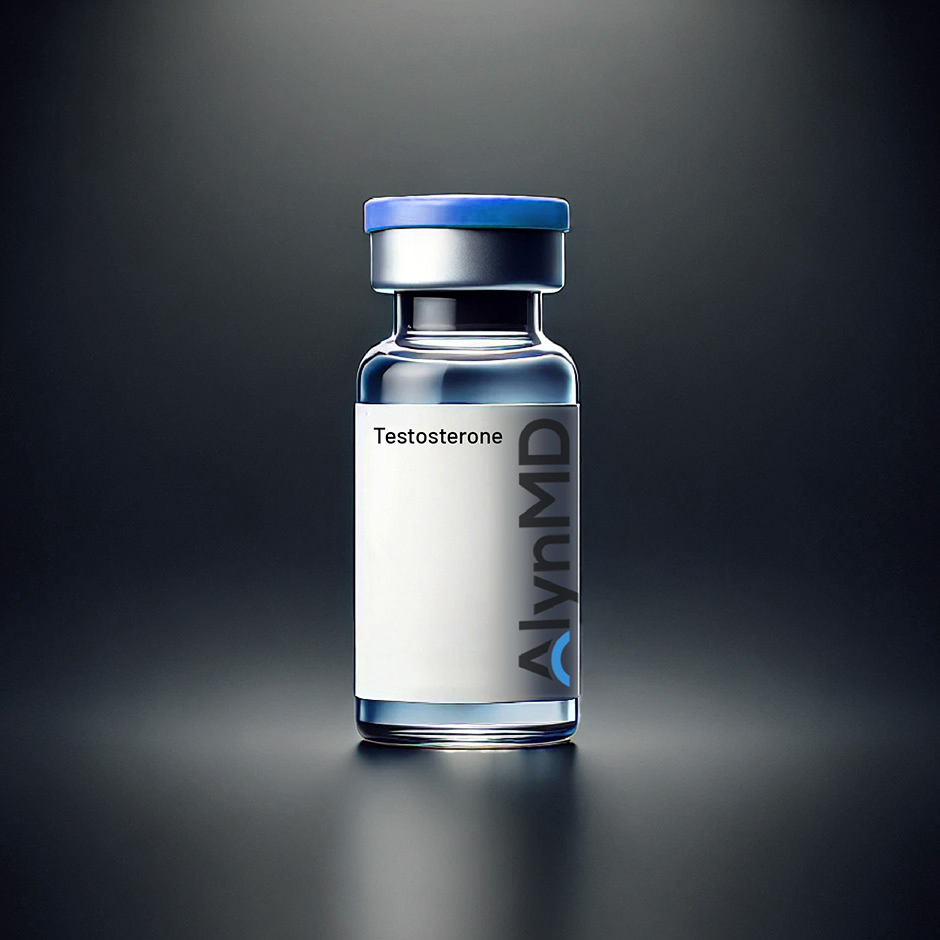
If you’re considering testosterone replacement therapy and wondering whether your insurance will cover online TRT services, you’re not alone. The reality is more complex than most men expect. While traditional healthcare providers may accept insurance for testosterone treatment, the vast majority of online TRT clinics operate on a cash-pay basis—and there are compelling reasons why.
Understanding the intersection of insurance coverage and online testosterone therapy requires navigating a complex landscape of coverage limitations, billing restrictions, and evolving telemedicine regulations. This comprehensive guide will break down exactly what insurance covers for testosterone replacement therapy, why most online clinics don’t accept insurance, and how to make the most cost-effective decision for your hormone optimization journey.

Does Insurance Cover Online TRT? The Reality Check
Most health insurance providers have significantly limited coverage for testosterone replacement therapy, particularly when it comes to age-related testosterone decline or optimization protocols. The harsh reality is that insurance companies typically only cover TRT for diagnosed hypogonadism with specific lab values—usually requiring total testosterone levels below 300 ng/dL measured on multiple occasions.
Online TRT clinics rarely accept insurance due to the restrictive nature of coverage policies and the complex billing requirements that come with insurance-based healthcare. Traditional insurance models create barriers that conflict with the personalized, optimization-focused approach that most online clinics provide. Instead, these providers operate on a cash-pay model that allows for more flexible treatment plans without the limitations imposed by insurance formularies and prior authorization requirements.
The cash-pay model enables online TRT providers to offer personalized treatment protocols that aren’t restricted by insurance guidelines. This includes more frequent lab testing, customized dosing schedules, and access to ancillary medications that insurance typically doesn’t cover. While this means higher upfront costs for patients, many find that HSA/FSA accounts can often be used for TRT expenses even when insurance doesn’t directly cover the treatment.
Current telemedicine regulations add another layer of complexity. Medicare telehealth flexibilities are maintained through September 30, 2025, but after this date, many online TRT services may face additional restrictions or requirements for periodic in-person visits, particularly for new patients starting testosterone therapy.
What Insurance Actually Covers for Testosterone Replacement Therapy
When insurance does provide coverage for testosterone replacement therapy, the benefits are typically limited to specific diagnostic and treatment components. Understanding what’s actually covered can help you maximize your insurance benefits and make informed decisions about your treatment options.
Insurance plans generally cover initial diagnostic blood work including total testosterone, free testosterone, and LH/FSH levels when ordered by an in-network healthcare provider. These comprehensive lab tests are essential for confirming low testosterone levels and ruling out underlying conditions that might be causing hormonal imbalance.
Physician consultations for the evaluation and diagnosis of clinical hypogonadism are typically covered under standard office visit benefits. This includes both initial evaluations and follow-up appointments necessary for ongoing monitoring and treatment plan adjustments. However, providers must document medical necessity and follow strict diagnostic criteria to ensure coverage.
Generic testosterone cypionate injections are usually covered when prescribed for approved medical conditions, particularly primary or secondary hypogonadism. Insurance companies prefer injectable testosterone over other delivery methods due to cost-effectiveness and established clinical evidence. Follow-up lab monitoring every 3-6 months is also typically covered as medically necessary for patients on testosterone therapy.
Treatment for underlying conditions causing secondary hypogonadism, such as pituitary disorders or other hormonal imbalances, may also be covered under standard medical benefits. This can include additional testing and specialist consultations to address root causes of low testosterone.
What’s Typically NOT Covered by Insurance
Understanding what insurance doesn’t cover is equally important for planning your testosterone treatment approach. Most insurance plans specifically exclude coverage for testosterone replacement therapy when used for “low normal” testosterone levels or age-related decline that doesn’t meet the clinical criteria for hypogonadism.
Comprehensive hormone panels beyond basic testosterone testing are rarely covered by insurance. This includes important markers like estradiol, SHBG, and other key health markers that many online TRT clinics include in their initial lab work and ongoing monitoring protocols. These additional tests can provide valuable insights for hormone optimization but typically require out-of-pocket payment.
Brand-name testosterone formulations or compounded medications are generally not covered by insurance formularies. Most plans limit coverage to generic testosterone cypionate or enanthate injections, excluding testosterone gels, patches, pellets, or other specialized delivery methods that some patients prefer for convenience or absorption issues.
Ancillary medications commonly used in testosterone therapy protocols, such as HCG for fertility preservation, aromatase inhibitors for estrogen management, or other hormone optimization medications, are typically not covered when prescribed specifically for TRT support. These medications can significantly improve treatment outcomes but represent additional out-of-pocket costs for patients.

Why AlynMD and Most Online TRT Clinics Operate Cash-Pay
The decision by AlynMD and similar online TRT providers to operate on a cash-pay basis stems from multiple practical and clinical considerations that ultimately benefit patient care and treatment outcomes. Understanding these reasons can help you appreciate why this model often provides superior value despite the higher upfront costs.
Insurance pre-authorization delays can take weeks or months, preventing timely treatment for men experiencing symptoms of low testosterone. The bureaucratic process of obtaining prior authorization often requires extensive documentation, appeals, and waiting periods that can significantly delay the start of testosterone treatment. Cash-pay clinics eliminate these delays, allowing patients to begin their treatment plan immediately after medical evaluation and lab results.
Restrictive insurance formularies limit medication options to basic generic testosterone formulations only. This constraint prevents healthcare providers from prescribing optimal treatment protocols that might include different testosterone esters, delivery methods, or dosing schedules that could be more effective for individual patients. The cash-pay model enables providers to prescribe the most appropriate medications for each patient’s specific needs and preferences.
Insurance-mandated lab monitoring frequency may be insufficient for optimal hormone monitoring and treatment optimization. While insurance typically covers lab work every 6 months, effective testosterone therapy often requires more frequent monitoring, especially during the initial treatment phases. Online clinics can provide comprehensive lab testing and ongoing monitoring without the artificial restrictions imposed by insurance coverage limitations.
The cash-pay model enables personalized dosing protocols that aren’t restricted by insurance guidelines. Insurance companies often dictate specific dosing ranges and injection frequencies that may not be optimal for all patients. Direct-pay providers can customize treatment plans based on individual response, symptoms, and lab results rather than one-size-fits-all insurance protocols.
Direct-pay arrangements eliminate prior authorization requirements and coverage denials that can interrupt treatment continuity. Patients don’t have to worry about sudden changes in insurance coverage, formulary restrictions, or prior authorization renewals that could disrupt their testosterone therapy. This provides peace of mind and consistent access to treatment.
Finally, cash-pay clinics can provide comprehensive testing including estradiol, SHBG, and other optimization markers that insurance typically doesn’t cover. This allows for more thorough hormone optimization and monitoring of potential side effects, leading to better treatment outcomes and patient satisfaction.
Online vs In-Person TRT: Insurance Coverage Differences
The choice between online and in-person testosterone replacement therapy involves significant differences in insurance coverage, cost structures, and treatment approaches. Understanding these distinctions can help you make an informed decision about which option best fits your healthcare needs and financial situation.
Traditional urologists and endocrinologists are more likely to accept insurance for TRT consultations and follow-up care. These specialists typically maintain contracts with major insurance networks and can bill directly for covered services. However, this comes with the trade-off of following strict insurance guidelines for diagnosis and treatment protocols that may not always align with optimal patient care.
In-person healthcare providers must adhere to rigid insurance guidelines for diagnosis and treatment protocols. This means they’re often limited to prescribing only formulary-approved medications, following predetermined dosing schedules, and conducting lab work at insurance-mandated intervals. While this ensures coverage, it may not provide the personalized approach that many patients seeking hormone optimization prefer.
Online clinics offer more flexible treatment options but typically require direct payment for their services. This flexibility includes customized dosing protocols, comprehensive lab panels, and access to a wider range of testosterone formulations and ancillary medications. The trade-off is higher upfront costs and the need to pay out-of-pocket for most services.
Telemedicine visits may be covered by insurance when conducted by in-network providers, but testosterone prescriptions often aren’t covered when issued through these virtual consultations. The regulatory landscape for telehealth prescribing of controlled substances (which includes some testosterone formulations) continues to evolve, and coverage policies vary significantly between insurance providers.
In-person providers may require multiple visits before prescribing testosterone therapy, potentially increasing out-of-pocket costs even with insurance coverage. The initial evaluation, follow-up consultations, and periodic monitoring visits can result in substantial copay expenses over time, sometimes exceeding the cost of cash-pay online clinics.
Cost Comparison: Insurance vs Cash-Pay
A realistic cost comparison between insurance-based and cash-pay TRT reveals that the financial differences may be smaller than initially expected. Insurance copays for specialist visits typically range from $40-100 per appointment, and patients usually need multiple visits throughout the year for proper monitoring and care.
Lab work copays typically cost $25-50 per panel, required every 3-6 months for patients on testosterone therapy. These ongoing lab costs add up over time, especially when combined with specialist visit copays and prescription costs. Many patients find that their insurance lab copays approach or exceed the cost of comprehensive hormone panels offered by cash-pay clinics.
Prescription copays for testosterone can range from $30-80 monthly depending on your specific insurance plan and formulary tier. Generic testosterone cypionate is usually less expensive, but patients may face higher costs for preferred formulations or if they haven’t met their annual deductible.
When calculating total annual costs with insurance, including copays, deductibles, and time investment for multiple appointments, many patients find they’re spending $1,500-2,000 per year. This often approaches or exceeds the cost of comprehensive cash-pay online TRT programs that include unlimited consultations, regular lab work, and medication.
Cash-pay online clinics typically charge $150-300 monthly for all-inclusive services. This usually covers initial and ongoing consultations, comprehensive lab testing, medication, and unlimited access to healthcare providers for questions and treatment adjustments. When compared to the total out-of-pocket costs with insurance, the cash-pay model often provides better value and convenience.

Step-by-Step Process for Starting TRT Online
Beginning your testosterone replacement therapy journey with an online provider involves a systematic process designed to ensure safe, effective treatment while maintaining clinical standards. Understanding each step can help you prepare for the process and set appropriate expectations for your treatment timeline.
The first step involves researching reputable online TRT clinics and comparing their pricing, services, and patient reviews. Look for providers with licensed medical teams, transparent pricing structures, and comprehensive treatment approaches. Consider factors like medication options, lab testing frequency, and ongoing support when evaluating different clinics.
You’ll need to complete a comprehensive online intake form covering your symptoms, medical history, and personal health goals. This detailed questionnaire helps providers understand your specific situation and identify any potential contraindications or special considerations for your treatment plan. Be thorough and honest in your responses to ensure optimal care.
The next step involves ordering initial lab work through the clinic’s partner laboratory (typically LabCorp or Quest) or submitting recent lab results if available. Most clinics provide lab requisitions that can be completed at convenient locations nationwide. The initial lab work includes essential tests like total testosterone, free testosterone, estradiol, and other key health markers necessary for treatment planning.
Once your lab results are available, you’ll schedule a virtual consultation with a licensed physician to review your results and discuss your symptoms. This consultation typically lasts 30-60 minutes and covers your medical history, current symptoms, treatment goals, and any questions about testosterone therapy. The provider will explain your lab results and recommend an appropriate treatment plan.
After medical evaluation, you’ll receive a personalized treatment plan with specific medication options and dosing recommendations. The plan will include detailed instructions for medication administration, expected timeline for improvement, and schedules for follow-up monitoring. Most providers offer multiple testosterone formulations to suit different preferences and lifestyles.
Treatment begins when medications are shipped directly to your home, typically within 2-3 business days of prescription approval. Online clinics usually provide comprehensive educational materials, injection tutorials (if applicable), and 24/7 access to medical support for any questions during treatment initiation.
Follow-up care includes a progress assessment after 6-8 weeks of treatment to evaluate initial response and make any necessary adjustments. This virtual consultation allows providers to assess symptom improvement, address any side effects, and modify the treatment plan as needed for optimal results.
Ongoing monitoring continues with quarterly lab work and regular virtual check-ins to ensure treatment safety and effectiveness. This consistent monitoring allows for treatment optimization and early detection of any potential issues, ensuring long-term treatment success and patient safety.
Required Lab Work for Online TRT
Comprehensive lab testing forms the foundation of safe and effective online testosterone replacement therapy. Understanding the required tests helps you prepare for the process and ensures your provider has all necessary information for optimal treatment planning.
Total testosterone levels must be measured with multiple morning samples to account for natural daily fluctuations. Most providers require at least two low readings taken between 7-10 AM to confirm clinically low testosterone before initiating treatment. This helps distinguish between temporary fluctuations and genuine hormonal deficiency.
Free testosterone or calculated free testosterone provides insight into the bioavailable hormone that actually affects your body. This measurement is crucial because some men may have normal total testosterone but low free testosterone due to elevated SHBG or other binding proteins. Many online providers include this test in their comprehensive lab panels.
Estradiol (E2) testing monitors estrogen levels, which can increase during testosterone therapy and potentially cause side effects. Baseline estradiol levels help providers anticipate potential issues and plan appropriate monitoring strategies. Ongoing estradiol monitoring is essential for treatment optimization and side effect prevention.
A complete blood count (CBC) checks red blood cell levels, which can increase during testosterone therapy. Elevated hematocrit is a potential side effect that requires monitoring and management. Baseline CBC results help establish normal ranges for each patient and track changes during treatment.
A comprehensive metabolic panel (CMP) evaluates liver and kidney function, ensuring these organs can safely process testosterone therapy. This panel also checks electrolyte balance and blood sugar levels, providing a complete picture of metabolic health before starting hormone therapy.
PSA (prostate-specific antigen) testing is required for men over 40 to screen for prostate issues before starting testosterone therapy. While testosterone doesn’t cause prostate cancer, it can accelerate the growth of existing cancer, making baseline PSA levels essential for safety monitoring.
Additional tests may include SHBG (sex hormone-binding globulin), LH and FSH levels, and thyroid function tests. These additional markers provide comprehensive insight into hormonal balance and help identify underlying conditions that might affect testosterone therapy effectiveness.
Maximizing Insurance Benefits for TRT-Related Expenses
Even when insurance doesn’t directly cover online TRT services, there are several strategies to maximize your insurance benefits and reduce out-of-pocket costs for testosterone-related healthcare expenses. Understanding these approaches can significantly impact your overall treatment costs.
Using in-network providers for initial evaluation and diagnosis helps establish medical necessity in your insurance records. Getting a formal hypogonadism diagnosis from a traditional healthcare provider creates documentation that may support future insurance claims or reimbursement requests. This diagnosis can also be valuable if you later switch to an insurance-covered provider.
Submitting receipts from cash-pay clinics to your insurance company for potential reimbursement is worth exploring, especially if you have out-of-network benefits. While full reimbursement is unlikely, some patients receive partial reimbursement for certain services, particularly lab work and physician consultations. Check with your insurance provider about their out-of-network reimbursement policies.
HSA/FSA funds can be used for legitimate medical expenses related to testosterone therapy, including lab work, consultations, medications, and medical supplies. These tax-advantaged accounts can significantly reduce the effective cost of TRT by allowing you to pay with pre-tax dollars. Keep detailed records of all TRT-related expenses for tax and reimbursement purposes.
Consider establishing your initial diagnosis with a traditional provider before switching to an online clinic. This approach allows you to use insurance benefits for the diagnostic process while gaining access to the convenience and personalized care of online providers for ongoing treatment. The formal diagnosis in your medical records may also support future insurance claims.
Some patients successfully use insurance for periodic lab work by having tests ordered through their primary care physician or other in-network providers. This strategy requires coordination between your online TRT provider and traditional healthcare team but can result in significant savings on monitoring costs.
HSA/FSA Eligible TRT Expenses
Health Savings Accounts and Flexible Spending Accounts can cover many testosterone replacement therapy expenses, making cash-pay treatment more affordable through tax savings. Understanding which expenses qualify helps maximize these benefits and reduce your effective treatment costs.
Physician consultations and telemedicine visits for testosterone therapy are typically HSA/FSA eligible when conducted by licensed healthcare providers. This includes initial evaluations, follow-up consultations, and ongoing medical management. Keep detailed records of all consultation fees for reimbursement claims.
Prescription testosterone medications qualify for HSA/FSA reimbursement when prescribed by licensed physicians for legitimate medical conditions. This includes injectable testosterone, topical gels, and other FDA-approved formulations. Save all pharmacy receipts and prescription documentation for reimbursement purposes.
Laboratory testing and blood work related to testosterone therapy are eligible expenses when medically necessary. This includes initial diagnostic testing, ongoing monitoring labs, and additional tests ordered by your healthcare provider. Lab fees often represent a significant portion of TRT costs, making HSA/FSA coverage particularly valuable.
Medical supplies like syringes, alcohol wipes, and other injection-related supplies are typically HSA/FSA eligible when used for prescribed medical treatments. Many online TRT providers include these supplies in their service packages, but separate purchases also qualify for reimbursement.
Some ancillary medications prescribed for TRT-related side effects may qualify for HSA/FSA reimbursement when prescribed by licensed physicians. This could include medications for managing estrogen levels or addressing other treatment-related issues. Consult with your HSA/FSA administrator about specific medication eligibility.

Alternative Coverage Options and Cost-Saving Strategies
Beyond traditional insurance coverage, several alternative options and strategies can help reduce the cost of testosterone replacement therapy while maintaining quality care. Exploring these alternatives can make TRT more accessible and affordable for patients with limited insurance coverage.
Generic testosterone cypionate costs $50-100 monthly at most retail pharmacies, significantly less than brand-name formulations. Even without insurance coverage, patients can often obtain testosterone prescriptions at reasonable costs by choosing generic options and shopping at different pharmacies for competitive pricing.
GoodRx and other pharmacy discount programs can substantially reduce medication costs for uninsured patients or those with high deductibles. These programs often provide discounts of 50-80% on prescription medications, including testosterone formulations. Compare prices across multiple discount programs to find the best rates in your area.
Some employers offer supplemental health benefits or wellness programs that may cover hormone therapy or anti-aging treatments. Check with your HR department about available benefits beyond traditional health insurance. Some companies offer health spending accounts or wellness reimbursements that could apply to TRT expenses.
Clinical trials and research studies occasionally provide free or low-cost testosterone replacement therapy for qualified participants. Academic medical centers and research institutions sometimes conduct studies comparing different TRT protocols or investigating new treatment approaches. Participating in legitimate research can provide access to quality care at reduced costs.
Compounding pharmacies often offer competitive pricing for customized testosterone formulations. These pharmacies can create personalized hormone preparations that may be more cost-effective than commercial products, especially for patients requiring specific dosing or delivery methods not available in standard formulations.
Some online TRT clinics offer payment plans or subscription models that spread costs over time, making treatment more manageable for patients with budget constraints. Look for providers that offer flexible payment options or sliding scale fees based on financial need.
Generic testosterone alternatives and biosimilar products continue to enter the market, potentially reducing costs over time. Stay informed about new options and discuss cost-effective alternatives with your healthcare provider as they become available.
Making the Financial Decision: Insurance vs Cash-Pay TRT
Choosing between insurance-based and cash-pay testosterone replacement therapy requires careful consideration of multiple factors beyond simple cost comparison. A comprehensive evaluation should include total expenses, convenience factors, quality of care, and long-term treatment goals.
Calculate total annual costs including all copays, deductibles, and time investment required for insurance-based care. Don’t forget to factor in the value of your time for multiple appointments, prior authorization delays, and potential treatment interruptions due to insurance issues. Many patients find that when all factors are considered, cash-pay options provide comparable or better value.
The convenience factor of online clinics versus multiple in-person appointments can significantly impact your quality of life and treatment adherence. Consider the time saved through virtual consultations, home medication delivery, and streamlined lab processes. For busy professionals or those in rural areas, the convenience premium may justify higher upfront costs.
Evaluate the quality of care and personalization offered by different providers. Cash-pay clinics often provide more individualized attention, comprehensive testing, and flexible treatment protocols compared to insurance-restricted providers. Consider whether these enhanced services align with your health goals and preferences.
Factor in potential insurance coverage changes and network restrictions that could affect your long-term treatment continuity. Insurance plans frequently change formularies, network providers, and coverage policies, potentially disrupting established treatment relationships. Cash-pay arrangements provide stability and continuity regardless of insurance changes.
Assess your long-term commitment and flexibility needs for optimal hormone optimization. If you’re seeking basic testosterone replacement for clear hypogonadism, insurance-based care may be sufficient. However, if you’re pursuing comprehensive hormone optimization with ongoing adjustments and monitoring, cash-pay providers may offer superior long-term outcomes.
Consider your overall health insurance utilization and deductible status. If you rarely use medical services and have a high-deductible plan, you may pay full price for TRT-related services anyway. In this case, cash-pay clinics might provide better value and service quality without any additional cost burden.
Evaluate the importance of privacy and discretion in your healthcare decisions. Some patients prefer the anonymity and privacy offered by cash-pay clinics, especially for sensitive treatments like hormone therapy. This factor may outweigh cost considerations for patients concerned about insurance records or workplace implications.
Red Flags When Dealing with Insurance for TRT
Being aware of potential red flags can help you avoid problematic situations and make informed decisions about testosterone replacement therapy providers and insurance arrangements. Recognizing these warning signs protects you from financial problems and ensures quality care.
Be cautious of providers who guarantee insurance coverage without thoroughly reviewing your specific plan details and medical history. Insurance coverage for TRT varies significantly between plans and individual circumstances. Legitimate providers will help you understand potential coverage but cannot guarantee approval without proper verification.
Avoid clinics that require large upfront payments while promising insurance reimbursement without clear documentation of coverage verification. Reputable providers will either work directly with insurance or be transparent about their cash-pay model from the beginning. Requests for large deposits based on uncertain reimbursement promises are significant red flags.
Never work with any provider suggesting fraudulent billing practices to obtain insurance coverage for non-covered services. This includes billing for different conditions, using incorrect procedure codes, or other deceptive practices. Such arrangements put you at risk for insurance fraud charges and compromise your medical records.
Be aware that insurance plans sometimes change TRT coverage policies mid-treatment, potentially leaving patients with unexpected costs or treatment interruptions. Choose providers who clearly explain these risks and have contingency plans for coverage changes. Avoid providers who don’t discuss potential insurance policy changes.
Don’t trust unrealistic promises about coverage for cosmetic or anti-aging testosterone use when insurance typically only covers diagnosed hypogonadism. Legitimate providers will honestly discuss the limitations of insurance coverage and help you understand what conditions qualify for coverage versus those that require cash payment.
Watch for providers who seem more focused on billing insurance than providing quality patient care. The best TRT providers prioritize treatment outcomes and patient satisfaction, whether they work with insurance or operate on a cash-pay basis. Be wary of clinics that seem primarily motivated by maximizing insurance reimbursements rather than optimizing your health outcomes.

Conclusion
Navigating insurance coverage for online testosterone replacement therapy requires understanding both the limitations of traditional insurance models and the advantages of modern cash-pay approaches. While most insurance plans provide limited coverage for TRT—typically only for diagnosed hypogonadism with specific lab values—the reality is that many patients find better value and outcomes through direct-pay online clinics.
The key to making the right decision lies in carefully evaluating your total costs, treatment goals, and personal preferences. Whether you choose insurance-based care through traditional providers or cash-pay services through online clinics, focus on finding a healthcare provider who prioritizes your individual needs and provides comprehensive, safe testosterone therapy.
As the telehealth landscape continues to evolve through 2025 and beyond, staying informed about coverage changes and new options will help you maintain optimal hormone therapy while managing costs effectively. Remember that the cheapest option isn’t always the best value—consider the complete picture of care quality, convenience, and long-term outcomes when making your decision about testosterone replacement therapy.








